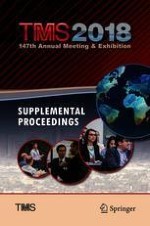2018 | OriginalPaper | Chapter
Current State Art of Hot Thermocouple Technology—Novel Way for the Study of Mold Flux High-Temperature Properties
Authors : Lei Zhang, Wanlin Wang, Lejun Zhou
Published in: TMS 2018 147th Annual Meeting & Exhibition Supplemental Proceedings
Publisher: Springer International Publishing
Activate our intelligent search to find suitable subject content or patents.
Select sections of text to find matching patents with Artificial Intelligence. powered by
Select sections of text to find additional relevant content using AI-assisted search. powered by
